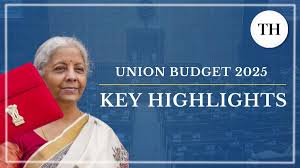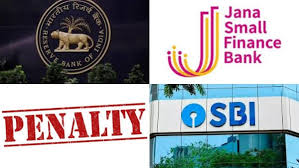Nirmala Sitharaman Set to Make History with Her 8th Budget
Introduction to Nirmala Sitharaman’s Historic Budget
India’s Finance Minister, Nirmala Sitharaman, is poised to present her 8th Union Budget on February 1, 2025. This marks a significant milestone in Indian political and economic history, as Sitharaman becomes the first woman in the country to handle the annual budget presentation for such a length of time. Known for her ability to balance economic priorities with social welfare schemes, her budget for this fiscal year is being closely watched, especially as the nation grapples with post-pandemic recovery and evolving global economic challenges.
Key Themes of the Budget
This budget is expected to address several key economic concerns, including fiscal consolidation, job creation, and inclusive growth. Analysts anticipate a significant push for reforms in the agriculture and infrastructure sectors, as well as additional provisions for supporting small businesses and startups. The focus is also expected to be on bolstering the country’s defense sector and improving the overall ease of doing business.
Furthermore, with the upcoming general elections in mind, this budget will likely reflect the government’s vision for long-term economic growth, ensuring the prosperity of various sectors. The budget’s proposals are crucial for India’s fiscal health, as well as for the socio-economic upliftment of its citizens.
Nirmala Sitharaman’s Role and Leadership
Nirmala Sitharaman has made history by becoming the first full-time female Finance Minister of India. Her leadership style is widely recognized for a blend of pragmatism and boldness. Her ability to navigate through complex economic policies while maintaining political sensitivity has made her a significant figure in the current Indian government. This budget will solidify her legacy in the history of India’s economic governance.

Why This News Is Important
Significance of the Budget in National Development
The Union Budget, presented annually by the Finance Minister, is one of the most critical documents for shaping the nation’s economic future. The allocation of resources, tax reforms, and initiatives announced in the budget directly impact the lives of millions of Indian citizens. This year’s budget under Sitharaman’s leadership is particularly significant, as it comes at a time when the nation is recovering from the pandemic’s economic fallout and looking to reinstate growth trajectories.
The budget not only reflects the government’s vision for India’s development but also sets the tone for reforms that will influence the overall economic environment for years. Key areas such as employment generation, inflation control, and infrastructural development are expected to be prioritized. Moreover, the fiscal policies introduced will have a direct impact on public welfare, industries, and sectors that form the backbone of India’s economy.
Role in Government Exams and Competitive Exams
For students preparing for government exams such as the IAS, PCS, banking, and defense services, the Union Budget is always a critical part of the syllabus. Questions relating to the allocations in the budget, the economic reforms proposed, and their implications are commonly featured in various competitive exams. Understanding the themes, proposals, and policies from this year’s budget will give candidates a clear advantage in their exams, especially in current affairs and general knowledge sections.
Empowerment of the Economy and Key Sectors
This budget also represents a key strategy for empowering different sectors of the Indian economy, particularly agriculture, defense, and small enterprises. With the defense and infrastructure sectors poised for growth, candidates need to be aware of how these sectors align with national priorities for enhancing India’s global position.
Historical Context
Budget Presentations in India: A Look at the Past
The practice of presenting the Union Budget in India dates back to 1947, with the first budget being presented by Shanmukham Chetty. Since then, the Finance Minister’s role has become central to the country’s financial management and development. Over the years, various governments have used the budget to lay down their economic vision, propose new policies, and respond to changing national and international conditions.
Nirmala Sitharaman’s first budget as Finance Minister in 2019 came at a crucial time as India faced economic challenges related to growth and unemployment. Since then, her successive budgets have included significant measures like tax relief, support for small businesses, and public welfare programs. Her consistent leadership in shaping these policies has placed her in the spotlight as an effective policymaker.
This year, as she presents her 8th budget, Sitharaman is navigating challenges like global inflation, volatile oil prices, and international trade disruptions. Thus, this budget will continue her legacy of making critical decisions that have far-reaching impacts on India’s economic landscape.
5 Key Takeaways from “Nirmala Sitharaman Set to Make History with Her 8th Budget”
| Serial No. | Key Takeaway |
|---|---|
| 1 | Historic Presentation: Nirmala Sitharaman is set to present her 8th Union Budget, marking a historic achievement as the first female Finance Minister to do so. |
| 2 | Focus on Economic Growth: The budget is expected to include provisions for job creation, economic recovery, and boosting sectors like infrastructure and defense. |
| 3 | Support for Agriculture and SMEs: Reforms are anticipated for agriculture, small businesses, and startups, which are essential for India’s growth and employment. |
| 4 | Fiscal Health and Reforms: The budget will focus on fiscal consolidation while ensuring the continuation of social welfare programs aimed at poverty alleviation and economic equity. |
| 5 | Implications for Government Exams: The Union Budget is a significant topic for various competitive exams and understanding its details is essential for students preparing for government positions. |
Important FAQs for Students from this News
1. What is the significance of Nirmala Sitharaman’s 8th Union Budget?
Nirmala Sitharaman’s 8th Union Budget is important because it marks her as the first female Finance Minister in India to present the budget eight times. This is a historic achievement, and the budget is expected to outline significant economic reforms that could shape the country’s fiscal future.
2. How does the Union Budget impact the average citizen?
The Union Budget affects citizens by influencing government policies related to taxes, public welfare programs, healthcare, and infrastructure development. It sets priorities for public spending and may lead to new initiatives that directly affect individuals’ daily lives, such as job creation and economic recovery.
3. What sectors are expected to benefit most from the 2025 Budget?
Sectors expected to benefit from the 2025 Union Budget include agriculture, defense, small businesses, and infrastructure. Special focus is anticipated on job creation and post-pandemic recovery.
4. Why is the Union Budget important for students preparing for government exams?
The Union Budget is an important topic for government exam preparation because it often features in current affairs sections of exams like the IAS, PCS, Banking, and Defense Services exams. Understanding the policies and economic changes proposed in the budget can help students answer questions in general knowledge and current affairs sections.
5. How is the Union Budget presented in India, and who presents it?
In India, the Union Budget is presented annually by the Finance Minister. The budget is typically presented on the 1st of February and outlines the government’s financial plans for the upcoming fiscal year. Nirmala Sitharaman, the current Finance Minister, will present her 8th budget in 2025.
Some Important Current Affairs Links


















